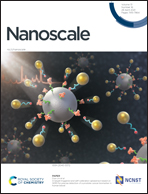Target-switchable DNA hydrogels coupled with a Bi2Sn2O7/Bi2S3 heterojunction based on in situ anion exchange for the “signal-on” photoelectrochemical detection of DNA†
Abstract
In this paper, a novel photoelectrochemical (PEC) “signal-on” biosensor based on a Bi2Sn2O7/Bi2S3 heterojunctioncoupled with target-switchable DNA hydrogels is reported for the ultrasensitive detection of P53 gene DNA. For the first time, sulfide ions are discovered to display an excellent PEC sensitization effect on Bi2Sn2O7 material by forming the Bi2Sn2O7/Bi2S3 heterojunction. The sensitization amplitude increased by 63 times, and the photocurrent polarity switched from cathodic to anodic. When the target DNA-induced-cycling amplification process produced a mass of product chains (PD), PD was introduced into the target-switchable DNA hydrogels to quantitatively release sulfide ions, which were further introduced to the Bi2Sn2O7-modified PEC platform and resulted in an enormous enhancement of the PEC signal due to the significant sensitization effect of sulfide ions on Bi2Sn2O7via an anion-exchange reaction. The corresponding PEC signal change of the Bi2Sn2O7/Bi2S3 platform was used for the detection of target DNA. This biosensing strategy opens up a novel sulfide ion-sensitized PEC platform and exhibits excellent analytical performance with a wide linear range (100 fM–10 nM), which has broad application prospects in bioanalysis and clinical diagnosis.



 Please wait while we load your content...
Please wait while we load your content...